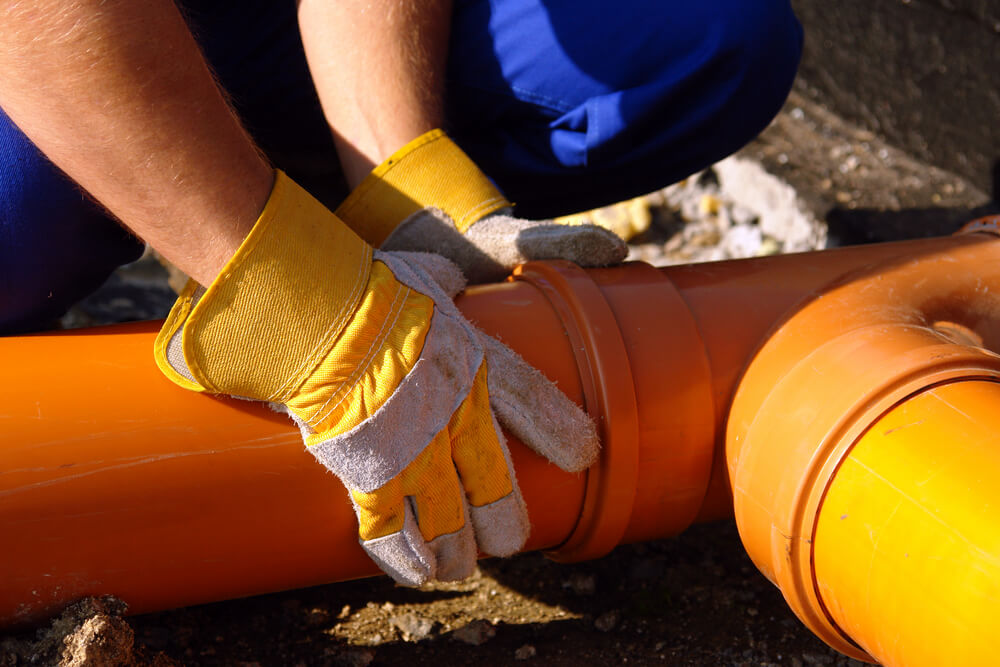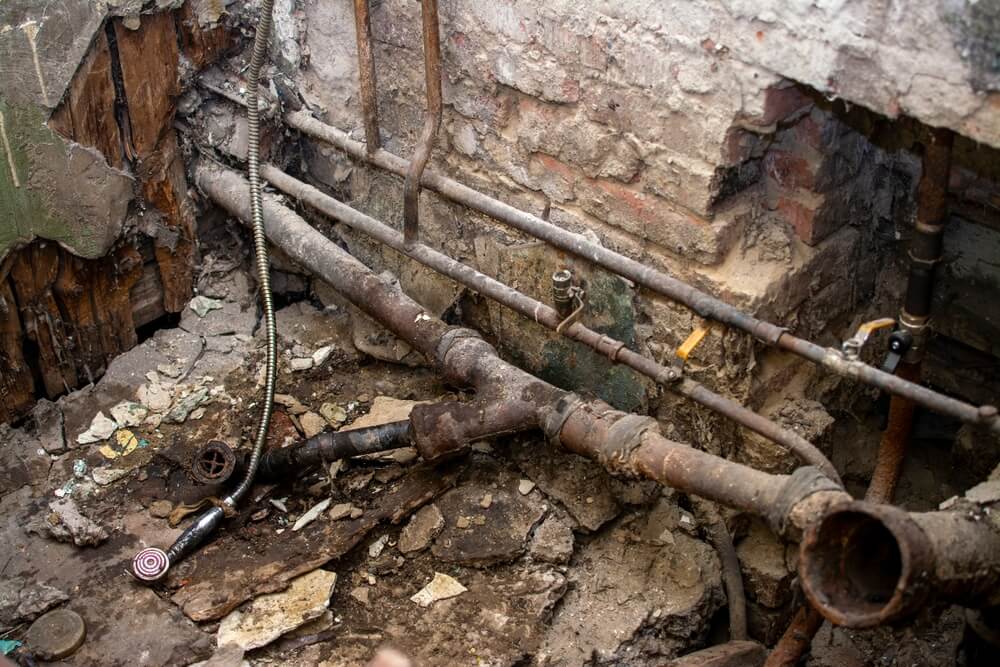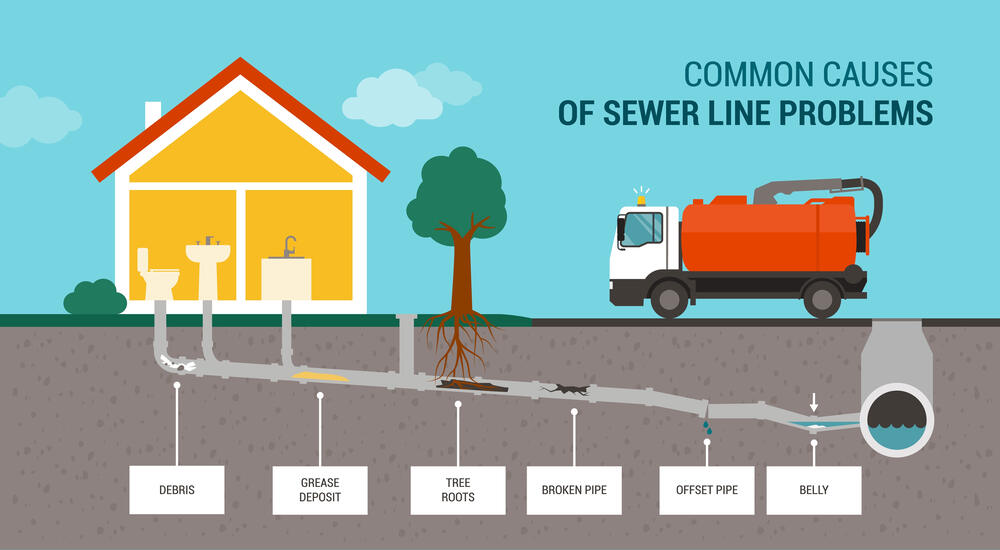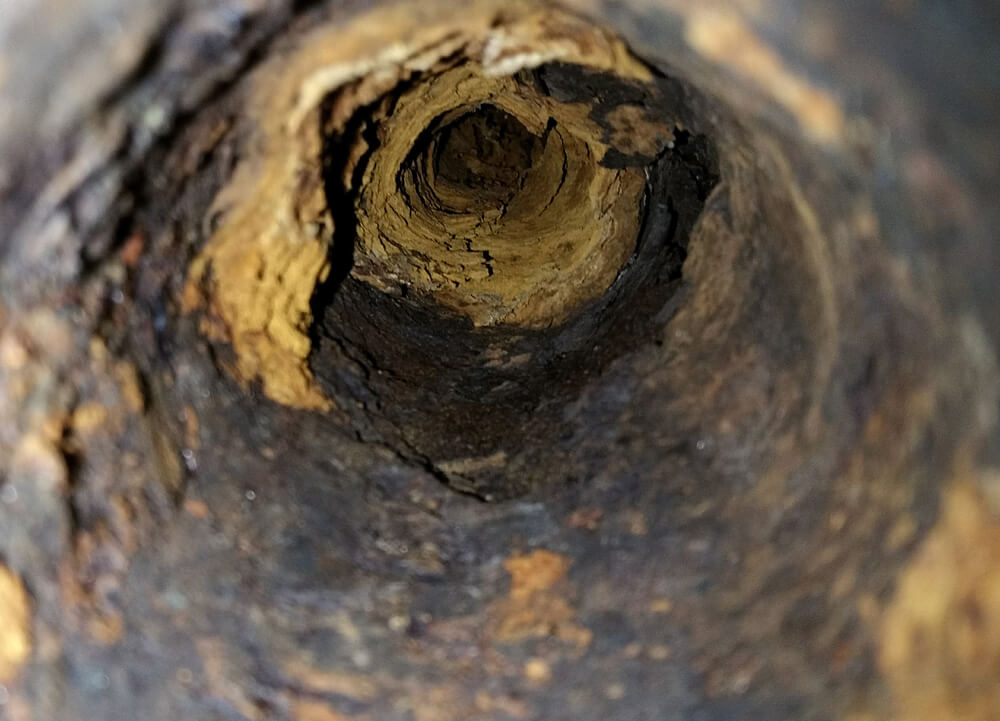When Should I Replace My Main Sewer Line?
As a homeowner, there are countless responsibilities and tasks to manage, ranging from routine maintenance to unexpected repairs.
One aspect of homeownership that is often overlooked until problems arise is the sewer line. The sewer line is a critical component of your home’s plumbing system, responsible for carrying waste and wastewater away from your property.
Over time, these sewer lines can deteriorate, causing numerous issues. In this comprehensive guide, we will explore when a homeowner should replace their sewer line, the different materials used, expected service lives, reasons for replacement, and the associated costs and timeframes.
The Importance of the Sewer Line
Before delving into the specifics of sewer line replacement, it’s crucial to understand the vital role it plays in your home’s plumbing system.
A properly functioning sewer line ensures the efficient removal of wastewater from your property, preventing backups, foul odors, and potential health hazards. When the sewer line is compromised, it can lead to costly repairs, property damage, and inconvenience.
Sewer Line Materials and Their Service Lives

Sewer lines can be made from various materials, each with its own lifespan and characteristics. Understanding the type of sewer line material in your home is essential when determining if and when replacement is necessary.
The most common materials used for sewer lines include:
Cast Iron
Cast iron sewer lines have been a staple in residential plumbing for many years. They are known for their durability and longevity. These pipes can last for an impressive 75 to 100 years when properly maintained. Many homes built before the mid-20th century have cast iron sewer lines. Eventually, cast iron loses the war to corrosion, and it is peeled away piece by piece from the inside out.
Clay
Clay sewer pipes were once the go-to choice for sewage systems. These pipes are resistant to rust and corrosion and have a service life of 50 to 60 years. They were commonly used in homes built before the 1960s. Clay sewer pipes have been considered obsolete for a few decades now.
PVC (Polyvinyl Chloride)
PVC sewer pipes have gained popularity in recent decades due to their affordability, durability, and immunity to corrosion. A well-maintained PVC sewer line is expected to last 50 to 100 years or more.
Truthfully, PVC has not been around long enough for us to have firm numbers on their average service life, but many believe PVC sewer pipelines will last at least 50 years and probably much longer. They are the go-to sewer line material in modern construction.
Orangeburg
Orangeburg pipes, also known as bituminous fiber sewer pipes, were used extensively in homes built from the 1860s to the 1970s. It was a low-cost pipe made of layers of wood pulp and asbestos fibers and then compressed with tar pitch. These materials made them prone to deterioration and damage.
Unfortunately, they have the shortest service life, with the best conditions they lasted 50 years. Under poor conditions, Orangeburg pipes lasted as little as 10 years. We always recommend full sewer replacement for Orangeburg pipes, or if they are in relatively good shape, they may be eligible for trenchless sewer line repairs.
ABS (Acrylonitrile Butadiene Styrene)
ABS pipes are another type of plastic sewer line material. They are durable and resistant to corrosion, with a service life of 50 years or more. ABS pipes are commonly used in modern residential plumbing systems.
Signs It’s Time to Replace Your Sewer Line

Regardless of the material, all sewer lines will eventually reach the end of their service life through wear, tear, and age. There are, however, other factors that can expedite the need for replacement.
Here are some common signs that indicate it may be time to replace your sewer line:
Frequent Clogs and Backups
If you find yourself dealing with frequent clogs and sewage backups, it could be a sign of a deteriorating sewer line. Tree roots, debris, and corrosion can restrict the flow of wastewater, leading to repeated blockages.
Foul Odors
Sewer line issues can manifest as unpleasant odors in and around your home. If you notice persistent sewer odors, it’s a clear indication of a problem that needs attention.
Slow Drains
Slow drains in sinks, tubs, and toilets throughout your home can be a symptom of a sewer line issue. It’s essential to address this problem promptly to prevent more severe damage.
Visible Pipe Damage
Inspecting your sewer line periodically can help you identify issues early. While most of your sewer line is buried underground and isn’t visible, you can likely see at least part of it in your basement or crawl space.
Look for visible signs of damage, such as cracks, breaks, or leaks. If you see any of these problems, it’s time to consider replacement.
Sinkholes or Depressions in the Yard
A gradual sinking of the land in your yard, sinkholes, or depressions near the sewer line’s path can indicate that the line is compromised. This is a critical issue that requires immediate attention to prevent further damage. A sewer line that breaks due to losing support under one section is considered to have “bellied out.”
Age of the Sewer Line
Knowing the age of your sewer line is valuable information. If your home was built before the 1960s and still has its original sewer line, it’s likely time to consider replacement, even if there are no visible issues. Older materials like clay and Orangeburg have shorter lifespans.
Reasons for Sewer Line Replacement

Aside from age-related deterioration and the signs mentioned above, several other factors may necessitate sewer line replacement:
- Root Invasions: Tree roots are notorious for infiltrating sewer lines in search of water and nutrients. As roots grow into the pipe, they can cause blockages, cracks, and, ultimately, the collapse of the sewer line. There are methods for dealing with tree roots in your sewer, but sometimes the damage is too great, and the sewer will have to be replaced.
- Shifting Ground: Changes in soil conditions, ground movement, and settling can put stress on sewer lines. This can lead to misalignment, cracks, or breaks in the pipes.
- Corrosion: Over time, corrosion can eat away at the interior of metal pipes, weakening them and making them prone to leaks and collapses. This is common with cast iron and steel sewer lines.
- Poor Installation: In some cases, sewer line problems may result from improper installation. If the original installation was flawed or subpar, replacement may be the best solution to ensure a reliable sewer system.
Sewer Line Replacement Process

Sewer line replacement is a significant undertaking, and it’s essential to understand the process and what to expect. Here is an overview of the typical steps involved:
1. Inspection
The first step is to conduct a thorough inspection of the sewer line. This involves a thorough video inspection to identify the exact location and nature of the problem.
2. Permitting
Before any work can begin, permits from the local municipality may be required. It’s crucial to ensure that all necessary permits are obtained. The local municipality needs to ascertain the plumbers know what they are doing, will follow code, and will not accidentally hit other buried utility lines.
3. Excavation
In most cases, excavation is necessary to access and replace the sewer line. Trenches are dug to expose the old pipe fully. Full access allows us to ensure the bedding of the sewer line is solid and helps reduce the chances of the ground falling out from the sewer line and causing future damage.
4. Pipe Replacement
Once the old sewer line is exposed, it can be removed, and the new pipe can be installed. The choice of replacement material will depend on your specific needs and budget, but we typically recommend PVC piping.
5. Backfilling
After the new sewer line is in place, the trenches are filled with soil, and the area is restored as closely as possible to its original condition.
6. Inspection and Testing
The newly installed sewer line is thoroughly inspected and tested to ensure it meets all plumbing codes and regulations.
7. Cleanup
The work area is cleaned up, and any debris or waste materials are disposed of properly.
Sewer Line Replacement Costs

The cost of main sewer line replacement can vary widely depending on several factors, including the length of the line, the depth of the pipes, the choice of materials, and the extent of damage or deterioration.
Homeowners can expect to pay anywhere from $3,000 to $7,000, with an average cost of $5,000 for sewer line replacement. However, more complex projects or those requiring extensive excavation can exceed $10,000.
How Much Does Sewer Line Replacement Cost Per Foot?
The cost to replace a sewer line per linear foot is between $55 and $250.
In terms of materials, expect to pay the following per 50 linear feet:
- ABS Plastic: $140 to $260
- PVC Plastic: $80 to $400
- Cast Iron: $1,200 to $3,700
Why are sewer line replacements so expensive? Material costs, machinery, insurance, permits, and labor costs all factor into the price of a sewer line replacement.
It’s essential to obtain multiple quotes from reputable plumbing contractors to get an accurate estimate for your specific situation. Additionally, check if your homeowner’s insurance covers any part of the replacement costs, as some policies may provide coverage for certain sewer line issues.
How Long Does Sewer Line Replacement Take?
The duration of sewer line replacement can vary depending on the complexity of the project. In general, a straightforward replacement can take as little as one to two days. However, more extensive projects or those with multiple complications may require several days to complete.
Factors that can affect the timeline include the length of the sewer line, the depth of the pipes, sidewalks, driveways, flower beds, other types of landscaping, and the need for additional repairs or adjustments.
Don’t Ignore Your Sewer Line
Your home’s sewer line is a critical component of your plumbing system, and its proper functioning is essential for a clean and comfortable living environment. Understanding when to replace your sewer line and recognizing the signs of deterioration are crucial for maintaining your property’s value and preventing costly repairs.
If you suspect issues with your sewer line or have noticed any of the warning signs discussed in this article, it’s important to consult with a licensed plumbing professional. They can assess the situation, recommend the best course of action, and provide you with a detailed estimate for sewer line replacement if necessary. By addressing sewer line problems promptly, you can avoid the inconvenience and expense of extensive damage and ensure the continued functionality of your home’s plumbing system.
If you need a main sewer line replacement in Lexington or Louisville, Kentucky, contact Dauenhauer Plumbing for a replacement quote. Our expert plumbers will have the best solution for long-term functionality and can get the job done quickly and professionally.